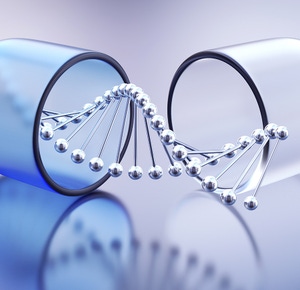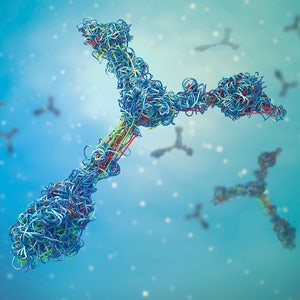Explore our cell lines & stem cells solutions


Learn about our world class antibodies for a diverse set of research areas including immunology, neuroscience, cancer, stem cells and cell biology.


Shop now with promo code HELLO10. Exclusions apply.


Shop now with promo code HELLO10. Exclusions apply.


Shop now with promo code HELLO10. Exclusions apply.


Shop now with promo code HELLO10. Exclusions apply.


Shop now with promo code HELLO10. Exclusions apply.


Shop now with promo code HELLO10. Exclusions apply.


Shop now with promo code HELLO10. Exclusions apply.


Shop now with promo code HELLO10. Exclusions apply.


Shop now with promo code HELLO10. Exclusions apply.


Shop now with promo code HELLO10. Exclusions apply.


Shop now with promo code HELLO10. Exclusions apply.


Shop now with promo code HELLO10. Exclusions apply.


Shop now with promo code HELLO10. Exclusions apply.


Shop now with promo code HELLO10. Exclusions apply.


Shop now with promo code HELLO10. Exclusions apply.


Shop now with promo code HELLO10. Exclusions apply.


Shop now with promo code HELLO10. Exclusions apply.


Shop now with promo code HELLO10. Exclusions apply.


Shop now with promo code HELLO10. Exclusions apply.


Shop now with promo code HELLO10. Exclusions apply.


Shop now with promo code HELLO10. Exclusions apply.


Shop now with promo code HELLO10. Exclusions apply.


Shop now with promo code HELLO10. Exclusions apply.


Shop now with promo code HELLO10. Exclusions apply.


Shop now with promo code HELLO10. Exclusions apply.


Shop now with promo code HELLO10. Exclusions apply.


Shop now with promo code HELLO10. Exclusions apply.


Shop now with promo code HELLO10. Exclusions apply.


Shop now with promo code HELLO10. Exclusions apply.


Shop now with promo code HELLO10. Exclusions apply.


Shop now with promo code HELLO10. Exclusions apply.


Shop now with promo code HELLO10. Exclusions apply.


Shop now with promo code HELLO10. Exclusions apply.


Shop now with promo code HELLO10. Exclusions apply.


Shop now with promo code HELLO10. Exclusions apply.


Shop now with promo code HELLO10. Exclusions apply.


Shop now with promo code HELLO10. Exclusions apply.


Work with our experienced scientific team and leverage our advanced technologies to help accelerate the preclinical drug discovery process.


Work with our experienced scientific team and leverage our advanced technologies to help accelerate the preclinical drug discovery process.


Work with our experienced scientific team and leverage our advanced technologies to help accelerate the preclinical drug discovery process.


Work with our experienced scientific team and leverage our advanced technologies to help accelerate the preclinical drug discovery process.


Work with our experienced scientific team and leverage our advanced technologies to help accelerate the preclinical drug discovery process.


Work with our experienced scientific team and leverage our advanced technologies to help accelerate the preclinical drug discovery process.


Work with our experienced scientific team and leverage our advanced technologies to help accelerate the preclinical drug discovery process.


Work with our experienced scientific team and leverage our advanced technologies to help accelerate the preclinical drug discovery process.


Work with our experienced scientific team and leverage our advanced technologies to help accelerate the preclinical drug discovery process.


Revvity's Oxford Diagnostic Laboratories is a large referral laboratory for tuberculosis testing services based on our T-SPOT technology.


Revvity's Oxford Diagnostic Laboratories is a large referral laboratory for tuberculosis testing services based on our T-SPOT technology.


Revvity's Oxford Diagnostic Laboratories is a large referral laboratory for tuberculosis testing services based on our T-SPOT technology.


Revvity's Oxford Diagnostic Laboratories is a large referral laboratory for tuberculosis testing services based on our T-SPOT technology.


Revvity's Oxford Diagnostic Laboratories is a large referral laboratory for tuberculosis testing services based on our T-SPOT technology.


Revvity's Oxford Diagnostic Laboratories is a large referral laboratory for tuberculosis testing services based on our T-SPOT technology.


Revvity's Oxford Diagnostic Laboratories is a large referral laboratory for tuberculosis testing services based on our T-SPOT technology.


Revvity's Oxford Diagnostic Laboratories is a large referral laboratory for tuberculosis testing services based on our T-SPOT technology.


Revvity's Oxford Diagnostic Laboratories is a large referral laboratory for tuberculosis testing services based on our T-SPOT technology.


Revvity's Oxford Diagnostic Laboratories is a large referral laboratory for tuberculosis testing services based on our T-SPOT technology.


Revvity's Oxford Diagnostic Laboratories is a large referral laboratory for tuberculosis testing services based on our T-SPOT technology.


Revvity's Oxford Diagnostic Laboratories is a large referral laboratory for tuberculosis testing services based on our T-SPOT technology.


Revvity's Oxford Diagnostic Laboratories is a large referral laboratory for tuberculosis testing services based on our T-SPOT technology.


Revvity's expression platform provides an enhanced system for the development and manufacturing of biotherapeutics that can be used in commercial manufacturing applications.


Revvity's expression platform provides an enhanced system for the development and manufacturing of biotherapeutics that can be used in commercial manufacturing applications.


Revvity's expression platform provides an enhanced system for the development and manufacturing of biotherapeutics that can be used in commercial manufacturing applications.


Revvity's expression platform provides an enhanced system for the development and manufacturing of biotherapeutics that can be used in commercial manufacturing applications.


Revvity's expression platform provides an enhanced system for the development and manufacturing of biotherapeutics that can be used in commercial manufacturing applications.


Revvity's Oxford Diagnostic Laboratories is a large referral laboratory for tuberculosis testing services based on our T-SPOT technology.


Revvity's Oxford Diagnostic Laboratories is a large referral laboratory for tuberculosis testing services based on our T-SPOT technology.


Revvity's Oxford Diagnostic Laboratories is a large referral laboratory for tuberculosis testing services based on our T-SPOT technology.


Revvity's Oxford Diagnostic Laboratories is a large referral laboratory for tuberculosis testing services based on our T-SPOT technology.


Revvity's Oxford Diagnostic Laboratories is a large referral laboratory for tuberculosis testing services based on our T-SPOT technology.


Revvity's Oxford Diagnostic Laboratories is a large referral laboratory for tuberculosis testing services based on our T-SPOT technology.


Revvity's Oxford Diagnostic Laboratories is a large referral laboratory for tuberculosis testing services based on our T-SPOT technology.


Revvity's Oxford Diagnostic Laboratories is a large referral laboratory for tuberculosis testing services based on our T-SPOT technology.


Revvity's Oxford Diagnostic Laboratories is a large referral laboratory for tuberculosis testing services based on our T-SPOT technology.


Revvity's Oxford Diagnostic Laboratories is a large referral laboratory for tuberculosis testing services based on our T-SPOT technology.


Revvity's Oxford Diagnostic Laboratories is a large referral laboratory for tuberculosis testing services based on our T-SPOT technology.


Revvity's Oxford Diagnostic Laboratories is a large referral laboratory for tuberculosis testing services based on our T-SPOT technology.


Shop now with promo code HELLO10. Exclusions apply.


Shop now with promo code HELLO10. Exclusions apply.


Shop now with promo code HELLO10. Exclusions apply.


Shop now with promo code HELLO10. Exclusions apply.


Shop now with promo code HELLO10. Exclusions apply.


Shop now with promo code HELLO10. Exclusions apply.


Shop now with promo code HELLO10. Exclusions apply.


Shop now with promo code HELLO10. Exclusions apply.


Driving meaningful innovation that profoundly impacts science and human lives.


Driving meaningful innovation that profoundly impacts science and human lives.


Driving meaningful innovation that profoundly impacts science and human lives.


Driving meaningful innovation that profoundly impacts science and human lives.


Shop now with promo code HELLO10. Exclusions apply.


Shop now with promo code HELLO10. Exclusions apply.


Shop now with promo code HELLO10. Exclusions apply.


Shop now with promo code HELLO10. Exclusions apply.


Shop now with promo code HELLO10. Exclusions apply.


Shop now with promo code HELLO10. Exclusions apply.


Shop now with promo code HELLO10. Exclusions apply.


Shop now with promo code HELLO10. Exclusions apply.


Shop now with promo code HELLO10. Exclusions apply.


Shop now with promo code HELLO10. Exclusions apply.


Quickly find and download manuals, safety documents, certificates of analysis and more.


Quickly find and download manuals, safety documents, certificates of analysis and more.


Quickly find and download manuals, safety documents, certificates of analysis and more.


Quickly find and download manuals, safety documents, certificates of analysis and more.


Quickly find and download manuals, safety documents, certificates of analysis and more.


Quickly find and download manuals, safety documents, certificates of analysis and more.


Quickly find and download manuals, safety documents, certificates of analysis and more.


Quickly find and download manuals, safety documents, certificates of analysis and more.


Quickly find and download manuals, safety documents, certificates of analysis and more.


Quickly find and download manuals, safety documents, certificates of analysis and more.


Quickly find and download manuals, safety documents, certificates of analysis and more.


Quickly find and download manuals, safety documents, certificates of analysis and more.


Quickly find and download manuals, safety documents, certificates of analysis and more.


Quickly find and download manuals, safety documents, certificates of analysis and more.


Quickly find and download manuals, safety documents, certificates of analysis and more.


Quickly find and download manuals, safety documents, certificates of analysis and more.


Quickly find and download manuals, safety documents, certificates of analysis and more.


Quickly find and download manuals, safety documents, certificates of analysis and more.


Quickly find and download manuals, safety documents, certificates of analysis and more.


Quickly find and download manuals, safety documents, certificates of analysis and more.


Quickly find and download manuals, safety documents, certificates of analysis and more.


Quickly find and download manuals, safety documents, certificates of analysis and more.


Quickly find and download manuals, safety documents, certificates of analysis and more.


Quickly find and download manuals, safety documents, certificates of analysis and more.


Quickly find and download manuals, safety documents, certificates of analysis and more.


Quickly find and download manuals, safety documents, certificates of analysis and more.


Quickly find and download manuals, safety documents, certificates of analysis and more.


Quickly find and download manuals, safety documents, certificates of analysis and more.


Quickly find and download manuals, safety documents, certificates of analysis and more.


Quickly find and download manuals, safety documents, certificates of analysis and more.


Quickly find and download manuals, safety documents, certificates of analysis and more.


Hearing the word "can't" is our call to action!
We help scientists, researchers, and clinicians overcome the world's greatest health obstacles.
View our story
Featured brand: BioLegend
Learn about our world-class antibodies for a diverse set of research areas including immunology, neuroscience, cancer, stem cells and cell biology.
Visit BioLegend.com


Select your location.
*e-commerce not available for this region.
Get exclusive pricing on all online purchases.
Login to your Revvity.com account for your account's pricing, easy re-ordering from favorites & order history, priority order processing, and dynamic order tracking.
Initiate a new order or access test status and results for clinical genomics or newborn screening services.
Our comprehensive suite of cell lines caters to a wide range of applications, spanning from biologics discovery through preclinical development. Designed to seamlessly align with your research and development needs, our cell lines offer the foundation for your scientific breakthroughs.
Choose from a variety of cell lines, including GPCR cell lines, Luciferase-labeled tumor cell lines, Engineered cell lines, Chosource platform, Membrane preparations.
Our cell lines can be used to identify and characterize biomarkers of interest, while addressing specificity and validation challenges through next-generation platforms.



G protein-coupled receptors (GPCRs) are a large family of transmembrane receptors that are significant drug targets. They function as enzymes that activate G-proteins. GPCRs couple to three main families of Gα subunits: Gαi/o, Gαs, and Gαq. The coupling specificity depends on the GPCR and its cellular environment. Gαs and Gαi subunits operate through the cAMP pathway, either activating or inhibiting adenylate cyclase, which converts ATP to cAMP. In this application note, the AlphaScreen™-based cAMP detection technology has been used to study Gαi-coupled receptors, specifically the 5-hydroxytryptamine-1A (5-HT1A) serotonergic receptor. The note demonstrates the utility of the AlphaScreen-based cAMP Assay kit for the pharmacological characterization and potential high-throughput screening of Gαi-coupled receptors.
G protein-coupled receptors (GPCRs) play a crucial role in various cellular and physiological processes, including cell proliferation, differentiation, neurotransmission, development, and apoptosis. GPCR activity is commonly assessed by measuring levels of intracellular cAMP upon stimulation by agonists. Abnormal GPCR activity is associated with many diseases, including cancer, making GPCRs an important class of pharmaceutical drug targets. Multiple assay formats have been developed to measure the level of cAMP generated, which can determine the pharmacological potency of different agonists and antagonists. The ideal assay is homogeneous, non-radioactive, and allows for sensitive and reproducible detection. AlphaScreen ™ technology provides a quantitative detection of molecules in a homogeneous, no-wash format and can be applied to GPCR research. Download this application note to learn more on the cAMP AlphaScreen assay: Detailed protocol, Data illustrated by graph and tables, Dynamic range description and validation.
The measurement of protein phosphorylation is a useful tool for measuring the modulation of receptor activation by both antibodies and small molecules. CCR7 and CXCR2 receptors, which are expressed in immune cells and are therapeutic targets for disorders like lupus erythematosus, adult leukemia, lymphomas, chronic obstructive pulmonary disease (COPD), and sepsis. AlphaLISA ™ SureFire ® Ultra ™ and Alpha SureFire ® Ultra ™ Multiplex assays are automation-friendly, applicable to both small and large-scale screens, and can assess phosphorylation status in complex matrices. The LANCE Ultra cAMP assay is measures cyclic AMP (cAMP) produced upon modulation of adenylyl cyclase activity by G-protein coupled receptors (GPCRs). This application note demonstrates how the SureFire Ultra and LANCE Ultra cAMP assays can be used for measuring inhibitors to CCR7 and CXCR2 cell surface receptors using a cellular model system where these receptors are overexpressed in CHO cells. The assays were optimized to measure receptor blockage and assayed receptor activity modulation by detecting ERK and AKT phosphorylation status and cAMP modulation. For more details, download the application note!
G protein-coupled receptors (GPCRs) are cell surface transmembrane receptors that activate G-proteins. GPCR activity is often assessed by measuring intracellular cAMP levels upon stimulation by agonists. Since GPCRs are important pharmaceutical drug targets, there’s a high demand for methods to detect and quantify cAMP. The ideal assay is homogenous, non-radioactive, and allows for sensitive and reproducible detection of cAMP. The AlphaScreen™ cAMP assay is one such method. It was evaluated for its ability to detect agonist or antagonist-induced cAMP responses in cells expressing either endogenous or recombinant receptors. Read this application note to access detailed data and results on GPCR studies using AlphaScreen cAMP detection kit.
G protein coupled-receptors (GPCRs) are one of the most intensively studied drug targets, with up to one-third of all marketed therapeutics acting by binding to GPCRs. Therapies that target GPCRs include both agonist and antagonists that are used in the treatment of disease in nearly every major organ system and hold significance in several therapeutic areas, such as cardiovascular diseases, neurosciences, respiratory diseases, metabolic disorders, oncology, and rare diseases. We know the importance of furthering GPCR research - and we answer the call with application notes, white papers, and end-to-end solutions including reagents, instruments, and tools for all aspects of research into today’s most promising drug target. For research use only. Not for use in diagnostic procedures.
The application note demonstrates how our IVISbrite tumor cell lines labeled with red-shifted luciferase (Red F-luc) yields a 100-fold higher signal intensity compared to competitor luciferase labeled cells. The increased brightness of our Red F-luc bioluminescent cells lines enable deeper tissue imaging of tumors. For research use only. Not for use in diagnostic procedures.
Researchers trust our in vivo imaging solutions to give them reliable, calibrated data that reveals pathway characterization and therapeutic efficacies for a broad range of indications. Our reagents, instruments, and applications support have helped hundreds of research projects over the years. And our hard-earned expertise makes us a trusted provider of pre-clinical imaging solutions— with more than 20,000 peer reviewed articles as proof.
Liquid tumors, which occur in the blood, bone marrow, or lymph nodes, are categorized into three main types of cancer: leukemia, lymphoma, and myeloma. Unlike solid tumors such as carcinomas and sarcomas, these cancers do not form solid masses, leading to different diagnosis and treatment approaches. Leukemia and lymphoma, both forms of blood cancer, affect the body differently. Leukemia primarily impacts the blood and bone marrow, while lymphomas mainly affect the lymph nodes. Significant progress has been made in developing new treatments for both cancers, often targeting the signaling pathways that are constantly activated in specific cancer types. This review highlights some of these signaling pathways and demonstrates how assays based on HTRF and AlphaLISA technologies can be used in the screening and development of new therapies for leukemia and lymphoma treatment.
We have developed a second-generation LANCE® time-resolved fluorescence resonance energy transfer (TR-FRET) immunoassay designed to measure cAMP produced upon modulation of adenylyl cyclase activity by activated GPCRs
In this note we describe the miniaturization of a LANCE Ultra cAMP assay from 384-to 1,536-well plate format for the identification and characterization of agonists and antagonists of a Gi-coupled GPCR.
Discover a comprehensive collection of GPCR cell lines, membrane preparations, and complementary radioligands designed to drive your GPCR research. Utilize this selection guide to easily identify: Cell lines available for specific receptors Assays that cell lines are validated for Corresponding complementary radioligands and their pharmacological action Learn more about the tools to support your research in this guide!





